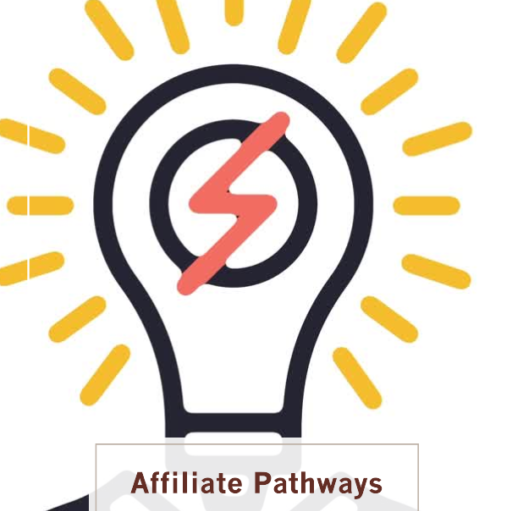
The first thing we want to know here before getting into the broader topic is . . .
What Is An Affiliate Marketing Case Study?
An affiliate marketing case study is the factual depiction of a real life situation, covering its highlights and lowlights. Affiliate marketing case studies have an illustrative purpose and could,therefore, be your best affiliate marketing training as a beginner. Treat these examples as your ultimate learning material.
The English word “study” comes from the Latin “studium,” meaning to labour at something, put oneself through a regimen, of hard work. Usually that endeavour has been reserved for one kind of activity since antiquity: the decoding of ancient or scriptural texts.
Taken together with the word “case” to become “case study,” that phrase now implies something — that you learn by studying only — no readymade enlightenment available.
Look at it this way, “Case Study” — reverse that word order and you get “Study Case” — you are being urged, subliminally, to apply yourself. And, taken further, you are being urged to learn, to learn to replicate. Could it be more obvious? The work is cut out for you, it seems.
An affiliate marketing case study is great not only as inspiration but also as antidote for that state of mind when someone is wonders why become an affiliate marketer. Why not?
Applying The Case Study In Affiliate Marketing
The following case studies provide an excellent opportunity for learning. While reading them is the first step, reading itself can never be sufficient. Learning something requires taking information from a number of different sources and producing an outcome. This is called synthesising. Assimilation. Interpretation. Decoding. Those are some of the other expression which taken together could be synthesised into: intelligent reading.
Affiliate marketing success depends on understanding one thing: how to generate revenue from the brands you partner with.
Successful Affiliate Marketing Case Studies
Case Study 1: Wirecutter
Who are they?
This company specialised in product reviews and recommendations for tech products. It used embedded links to the products it reviewed to drive traffic to their brand partners.
How did they apply the affiliate marketing model?
When their audience made purchases using those links, they earned earned revenue from retailers they had partnered with: Amazon Associates; Best Buy; and others
What was the outcome?
The New York Times bought them in 2016 for $30 Million.
Case Study 2: Smart Passive Income
Who Are They?
This is a educational content platform started by its founder, Pat Flynn, who taught his audience to generate passive income from using a host of tools such as Bluehost (web hosting) and Convert Kit (email marketing) and others.
How did they apply the affiliate marketing model?
By embedding links as referrals to products he himself had used. This method earned him trust — because he only recommended products from his own experience. This is an example of double benefit: earning the trust of the brand with which he had partnered, on the one hand; and his own curated audience who made purchasing decisions on his recommendations, on the other hand.
What was the outcome?
Higher conversion rates and therefore revenues — all because of the trust built with the two-way trust. Last available revenue report, Dec 2017, $125, 267.88 a substantial part of it from affiliate income. The figure was reported by SPI itself.
Case Study 3: Skyscanner
Who are they?
Skyscanner as the evocative name suggests specialises in air travel information that it provides in the form of single platform. It compiles information from a comprehensive range of sources, functioning thus as what is a called an aggregator.
How did they apply the affiliate marketing model?
When visitors to the site click on links to buy flights and other associated services (car hires; hotels) Skyscanner earns income as an affiliate. From start to finish, the user is in a sales funnel — which eventually leads to an affiliate link that they must click in order to complete the transaction.
What was the outcome?
Skyscanner valued approx. at $1.74 billion was bought by Ctrip — this valuation is largely owing to its business model of affiliate partnerships with travel providers — airlines, predominantly.
Synthesis
These brands make one of the most compelling cases: affiliate marketing. If anybody needed inspiration in launching an affiliate marketing business, there could not be better examples. The business model works.
All three of them share common attributes — building trust, transparency and producing high quality content.
One last thing: they used companies such as Semrush and Ahrefs for researching ranking keywords and building high quality content around them. For example, what is the most searched word in the tech niche? What is the most priority of the air travelling public? (“How can I find the cheapest flight on Skyscanner” is an actual question in Skyscanner). With queries such as these, the brands were able to pin point demographic sizes and their market potentials.
It comes down to: keyword research; SEO and; defining questions. While the first two are tech matters, the last is not. Defining and refining a question is ultimately a matter of human subjectivity: the user’s own understanding. True, that the platform’s functionalities may suggest different wording or word orders (syntax), it still comes down to the user. Human intervention is still relevant. So, what you need is to focus is on yourself. Work on your questions.
One of the most effective ways of doing this might be to formulate an overarching question such as: “My most burning question is . . .” Put whatever is vital to you at the moment at the end.
Let me illustrate this with an example from above:
“How can I find the cheapest flight on Skyscanner” is an actual question in Skyscanner.
Quite possibly the bolded words are keywords. The “How to . . . ” is also one of the most popular phrases. It can be used (hint, hint) to formulate questions effectively in any niche.
Using keywords and keyword clusters, Skyscanner built high quality content, thus providing value, so indispensable in ranking.
Does that suggest something to you? Yes?
